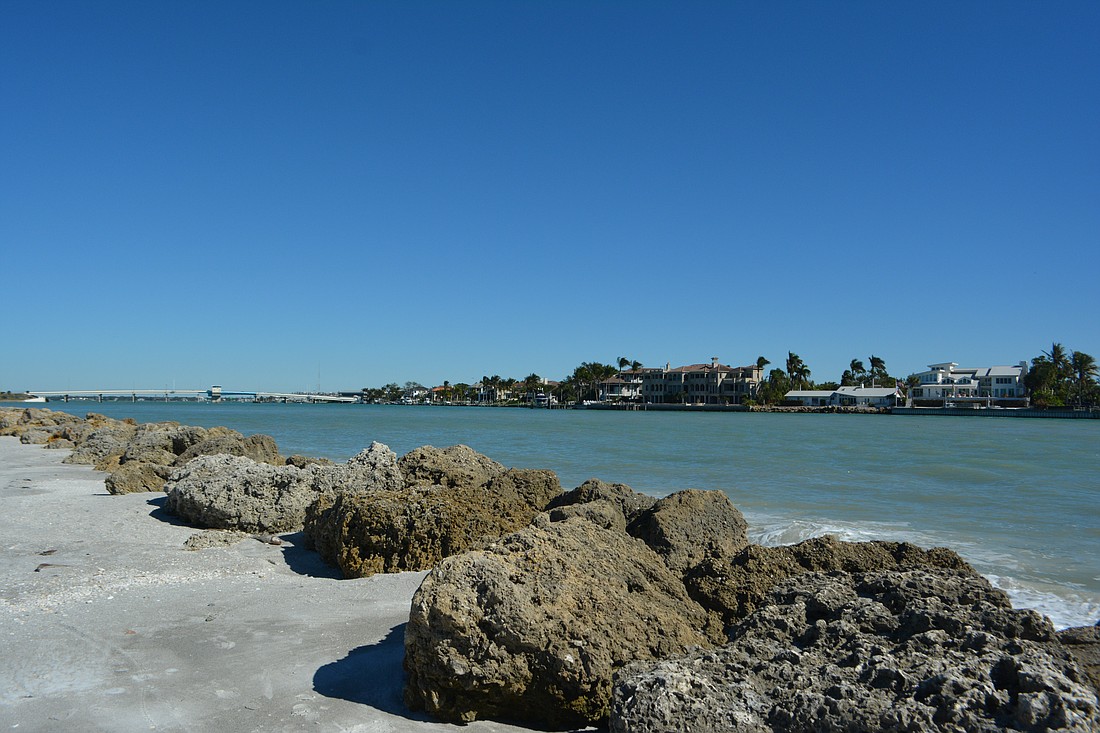- May 17, 2025
-
-
Loading

Loading

The New Pass groin tightening project, originally supposed to begin this month, will likely have to wait until after the 2023 sea turtle nesting season has wrapped up next fall, town officials said.
The town expected to receive permits from the U.S. Army Corps of Engineers in late 2022 to begin the work this winter, but even as the new year began, the paperwork still had not arrived, said Longboat Key Public Works Department Programs Director Charlie Mopps.
While the window on beginning the work this turtle off-season remains open if permits arrived promptly, town officials are making plans to wave off until late 2023 should permitting not arrive.
“Right now, we are primarily targeting the end of turtle nesting season for the start of the project,” Mopps said of the season that runs from from May through October on Florida's west coast. About 1,300 nests were logged by beach patrol volunteers during the last season on Longboat Key beaches.
Permits that would allow the work during the nesting season, or any kind of change in the work proposed in the original permit applications, would raise the cost of the project, Mopps said.
The New Pass rock groin has already undergone a maintenance cycle in the past. The current project is acting as the second phase of necessary maintenance.
“Some of the rocks on the landward side will end up getting moved,” Mopps said. “Then they will put in what is called a filter fabric. Then, the rocks will be replaced and others will join them.”
Tightening or placing a new rock groin, regardless of the location, aids in protecting the beach and keeping sand in place from nourishment projects within the town’s system. The groin's structure is designed to block the flow of sand and keep it where it was placed -- and also keep it out of New Pass, a key route for boaters between Sarasota Bay and the Gulf of Mexico. Too much sand in the pass shallows the water, making the passing through difficult for larger boats.
“Having the fabric in place makes the groin less leaky,” Mopps said. “Right now, the sand is just bypassing through the groin. It’s not holding it in place like we want it to.”
The groin project is a complement to work done elsewhere on the island to widen and recontour the beaches with sand pumped from offshore locations.
The groin remains semi-permeable to allow for some natural flow of water to go in and out of the groin as to not impede on the natural progression of the ocean.
The groin project is the final piece of a comprehensive beach project sent to voters in March of 2020, seeking their approval to borrow up to $34.5 million for no more than eight years.
In the end, the project came in under budget with about a million cubic yards of sand pumped on to the shoreline, along with the construction of new groins on the north end of the island.
That's more sand than would fit in Epcot Center's Spaceship Earth centerpiece, by the way.
In total, the town has moved 8.7 million cubic yards of sand in the history of its beach renourishment projects, which are necessary every six to eight years.